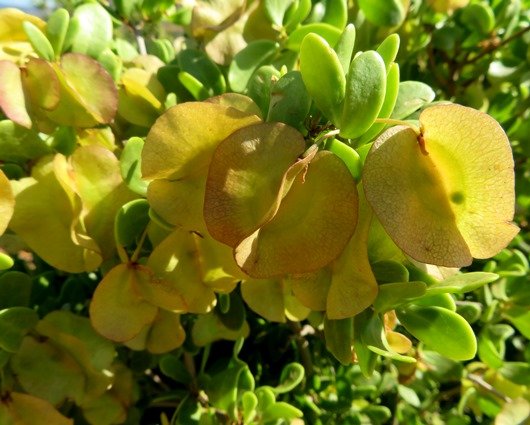Zygophyllum

Author: Ivan Lätti
Photographer: Thabo Maphisa
Zygophyllum is a genus of more subshrubs than shrubs. They grow jointed stems, several of the plants spiny. The genus lost members early in the twenty first century when molecular analysis indicated that some prior inclusions did not evolve from the common ancestor. These species are now in genera like Augea and Roepera, the latter also an earlier name of the Zygophyllum genus.
The generic name is derived from the Greek words zygon meaning double and phyllon meaning leaf, referring to the two paired leaflets of every leaf. No wonder a Zygophyllum plant is commonly known as a twinleaf.
The leaves of Zygophyllum plants are opposite, two-foliolate (comprising two leaflets), usually fleshy and sometimes deciduous. The stipules on the stems next to leaf stalks or bases are membranous, leafy or spine-like.
The flowers grow solitary or in pairs. The calyx has four or five lobes, often fleshy, sometimes persistent. The four or five clawed or sessile petals are white, yellow or orange. They may have variable red markings near the base, sometimes on some petals only, as the flower-shape is in some cases irregular.
Eight to ten stamens grow from the basal disc of the flower, their filaments cylindrical with two-part appendages low down. The superior ovary is positioned on this disc. Ovary shapes include furrowed, winged or angled, comprising four or five locules, each containing two or more ovules. The style is cylindrical, varying in length across the species, the stigma minute.
The fruit is a four or five-locular capsule, winged or angled. Multiple seeds with crusted coverings and endosperms are produced in each locule.
There are about 53 Zygophyllum species on earth, distributed around the Mediterranean and in semi-arid parts of Africa, Australia and Asia. The plants often grow in brackish soils. Southern Africa has about 44 species. Several of them provide useful fodder, while others are not browsed and some are poisonous or have poisonous parts.
The plant in picture showing winged fruits and twin leaflets is Zygophyllum morgsana, photographed in the Biedouw Valley during September (Leistner, (Ed.), 2000; Vlok and Schutte-Vlok, 2015; Manning, 2007; iNaturalist).

